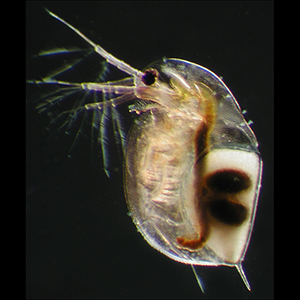Metabarcoding to monitor the crustacean zooplankton of a lake improves when using a reference DNA library from local samples

Accepted: 16 January 2023
HTML: 106
Supplementary: 57
Supplementary Data: 95
All claims expressed in this article are solely those of the authors and do not necessarily represent those of their affiliated organizations, or those of the publisher, the editors and the reviewers. Any product that may be evaluated in this article or claim that may be made by its manufacturer is not guaranteed or endorsed by the publisher.
Authors
Biodiversity surveys through morphology provide invaluable data to inform biological monitoring efforts, involving specialised taxonomic skills that are not always available. The revolution brought by the advent of metabarcoding associated to massive sequencing is currently seen as a potential advance, even if different approaches may often provide different results. Here we test if reliable results from metabarcoding can be obtained by i) basing the analyses on a detailed knowledge of the local diversity from morphology, ii) applying tools from DNA taxonomy to create a local reference library, ii) developing custom primers, taking as example the crustacean zooplankton of a subalpine lake in Northern Italy, Lake Maggiore. We support the idea that occurrences from metabarcoding can be reliable, especially with targeted primers, but we confirm that read numbers from massive sequencing could not be related to abundance of individuals in our analyses. Data from metabarcoding can thus be used to reliably monitor species occurrence in the lake, but not changes in abundance.
Supporting Agencies
CIPAIS, Progetti@CNR SOS AcqueDépartement de Biologie Chimie et Géographie, Université du Québec à Rimouski, 300 Allée des Ursulines, Rimouski, QC G5L 3A1, Canada
National Biodiversity Future Center (NBFC), 90133 Palermo, Italy
National Biodiversity Future Center (NBFC), 90133 Palermo, Italy
How to Cite

This work is licensed under a Creative Commons Attribution-NonCommercial 4.0 International License.
Similar Articles
- Jens Petter NILSSEN, Svein Birger WÆRVÅGEN, Superficial ecosystem similarities vs autecological stripping: the "twin species" Mesocyclops leuckarti (Claus) and Thermocyclops oithonoides (Sars) - seasonal habitat utilisation and life history traits , Journal of Limnology: Vol. 59 No. 2 (2000)
You may also start an advanced similarity search for this article.
-
Katarzyna Janik‐Superson, Dawid Krawczyk, Monika Baranowska, Klaudyna Królikowska, Michał Seweryn, Jakub Lach, Grzegorz Tończyk, Dominik Strapagiel, Karolina Bącela‐Spychalska, Annette TaugbølAquatic Conservation: Marine and Freshwater Ecosystems : 2025
-
Manuel Elías-Gutiérrez, Martha Valdez-Moreno, Lucia Montes-Ortiz, Alma E. García-MoralesDiversity : 2025
-
Giulia Lin, Michael Plewka, Erling Brekke, Øystein N. Kielland, Glenn Dunshea, Diego FontanetoJournal of Limnology : 2025
-
Jan‐Niklas Macher, Alejandro Martínez, Sude Çakir, Pierre‐Etienne Cholley, Eleni Christoforou, Marco Curini Galletti, Lotte van Galen, Marta García‐Cobo, Ulf Jondelius, Daphne de Jong, Francesca Leasi, Michael Lemke, Iñigo Rubio Lopez, Nuria Sánchez, Martin Vinther Sørensen, M. Antonio Todaro, Willem Renema, Diego FontanetoMolecular Ecology Resources : 2024

 https://doi.org/10.4081/jlimnol.2023.2087
https://doi.org/10.4081/jlimnol.2023.2087





